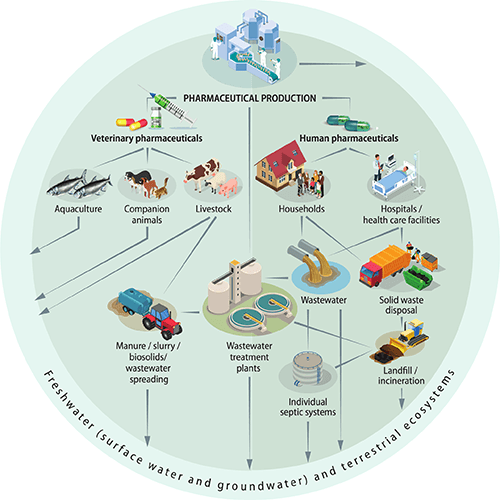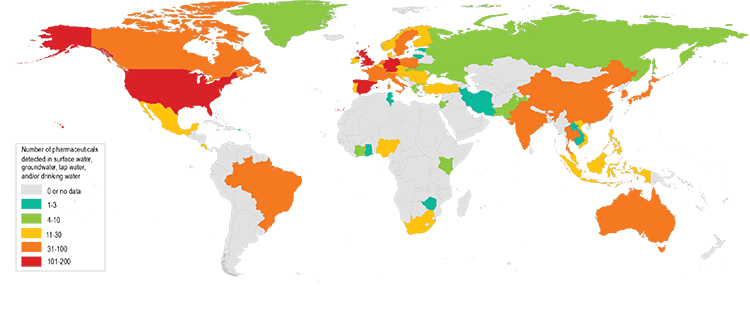Chemical safety and biosafety

Pharmaceutical Residues in Freshwater
Hazards and Policy Responses
This report calls for a better understanding of the effects of pharmaceutical residues
in the environment, greater international collaboration and accountability distribution,
and policy actions to prevent and remedy emerging concerns. Laboratory and field tests
show traces of oral contraceptives causing the feminisation of fish and amphibians,
and residues of psychiatric drugs altering fish behaviour. Antimicrobial resistance,
linked to the overuse of antibiotics, has rapidly escalated into a global health crisis.
Unless adequate measures are taken to manage the risks, pharmaceutical residues will
increasingly be released into the environment as ageing populations, advances in healthcare,
and intensification of meat and fish production spur the demand for pharmaceuticals
worldwide. The report outlines a collective, life-cycle approach to managing pharmaceuticals
in the environment. A policy mix of source-directed, use-orientated and end-of-pipe
measures, involving several policy sectors, can help to improve health and protect
the environment.
Published on November 13, 2019
In series:OECD Studies on Waterview more titles
TABLE OF CONTENTS
| Foreword | |
| Abbreviations | |
| Executive Summary | |
| OECD Policy Recommendations on addressing pharmaceutical residues in freshwater | |
| Defining the challenge of managing pharmaceuticals in water | |
| Opportunities to build a policy-relevant knowledge base | |
| Emerging policy instruments for the control of pharmaceuticals in water | |
| Recommendations for the management of pharmaceuticals in freshwater | |
| Glossary |
Powered by OECD iLibrary

